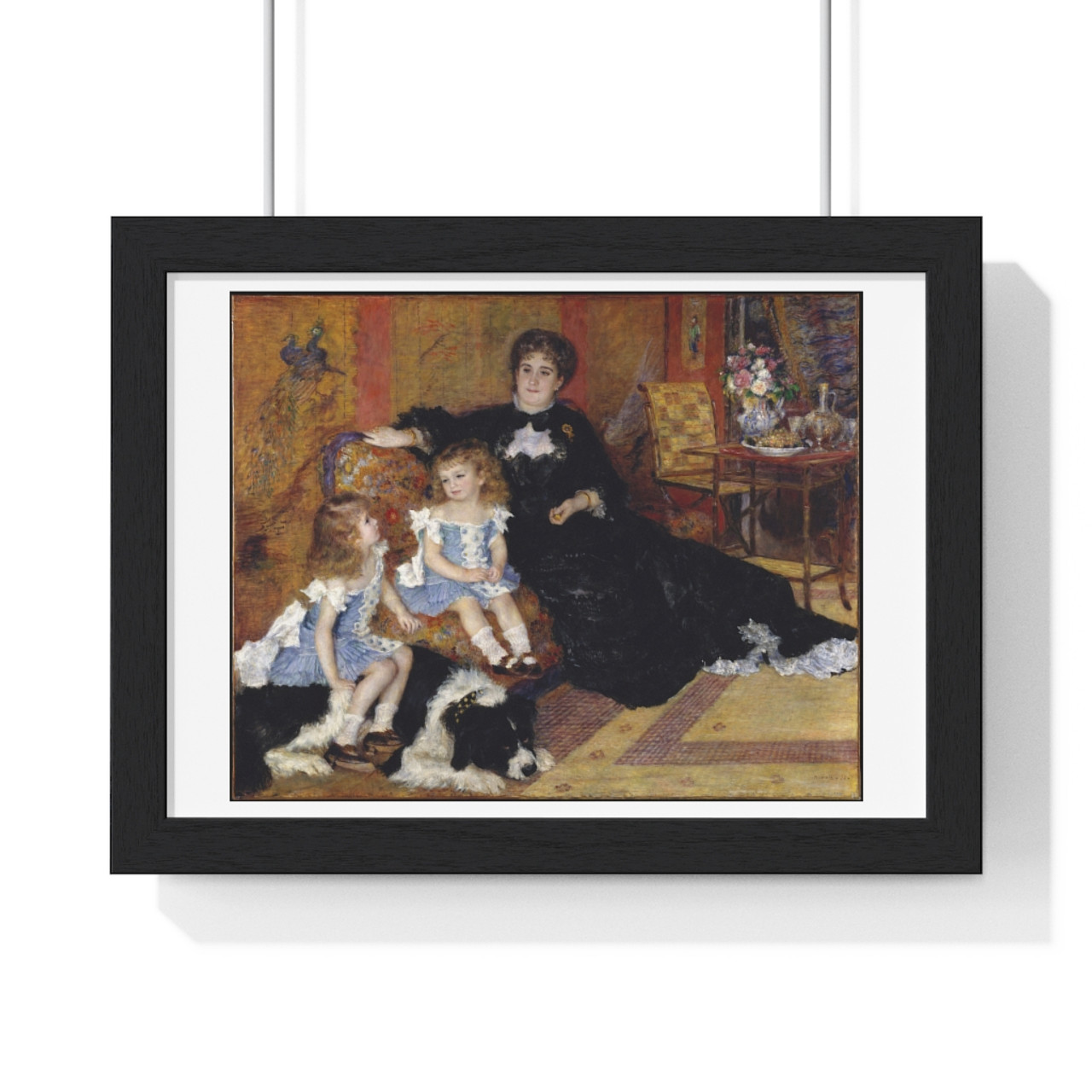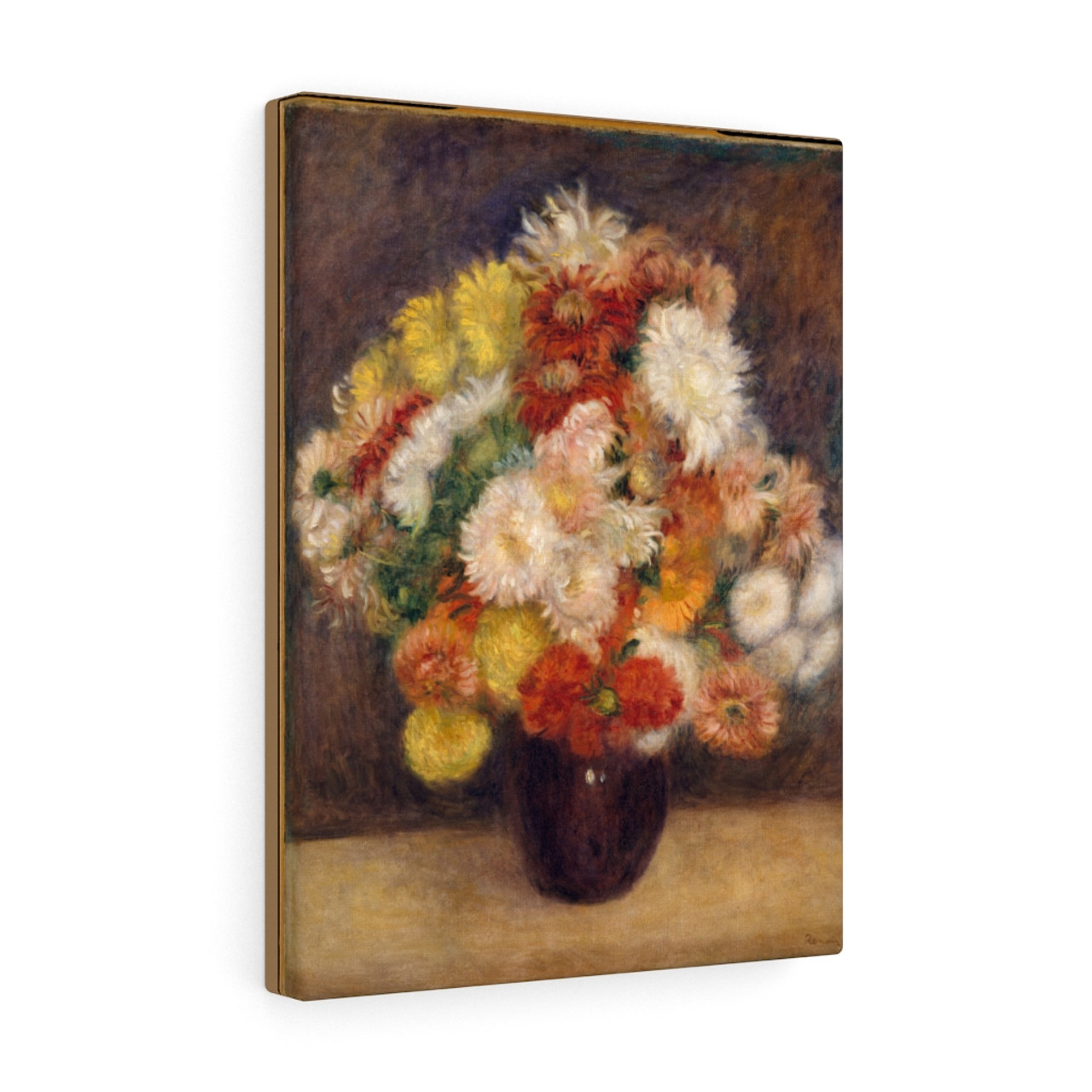Pierre-Auguste Renoir – Founding Member of Impressionist Movement
BlogAdmin on 27th May 2022
Pierre Auguste Renoir was a more subtle and thoughtful painter than widely supposed. Despite being a founding member of the Impressionist movement, he stopped exhibiting with the group after 1877.
During the 1880s and 1890s, Renoir established a monumental classical style that inspired such avant-garde geniuses as Pablo Picasso.

He continued to develop this style long into the 20th century.
His Early Days
Renoir started his art career as a porcelain painter. But his aspirations to become a professional artist pushed him to seek additional training. In 1860, he began copying paintings at the Louvre and soon entered the studio of academic artist Charles Gleyre.
This was when he joined Claude Monet, Frédéric Bazille, and Alfred Sisley. Four companions began painting in the forest of Fontainebleau soon afterwards.
However, Renoir was always devoted to portraiture and figure paintings. Gustave Courbet was a major influence on his early female nudes, with his earthy palette and curvaceous figure types.
Figures on the Beach, Auguste Renoir – Premium Framed Horizontal Poster
Sea and Cliffs, Auguste Renoir French – Premium Framed Horizontal Poster
Madame Georges Charpentier (Marguérite-Louise Lemonnier, and Her Children, Georgette-Berthe, and Paul-Émile-Charles, Auguste Renoir French – Premium Framed Horizontal Poster
Bouquet of Chrysanthemums, Auguste Renoir French – Premium Framed Vertical Poster
By the Seashore, Auguste Renoir French – Premium Framed Vertical Poster
Still Life with Flowers and Prickly Pears, Auguste Renoir French – Premium Framed Vertical Poster
Enthralled by Raphael and Pompeii
During the Impressionist era, Renoir’s art centered on common people, the streets, and their surroundings. However, he refused to show with the Impressionists in 1878 because he was suspicious about the viability of their aesthetics.
Soon he began to experiment with new artistic avenues as a result of his newfound financial freedoms. Renoir turned to the old masters for the art of structure, artistry, and permanence.
His self-study of the “grandeur and simplicity of the ancient painters” continued in 1881 when he departed for Italy. As soon as he returned, he was enthralled by Raphael and Pompeii.
His figures eventually took on a more crisp, sculptural quality.
The Bay of Naples, Auguste Renoir French – Premium Framed Horizontal Poster
Auguste Renoir – Flowers in a Vase – Premium Framed Vertical Poster
Auguste Renoir – Odalisque – Stretched Canvas
Auguste Renoir, Pont Neuf- Paris – Premium Framed Horizontal Poster
Auguste Renoir-Child with Blond Hair- Premium Framed Vertical Poster
Greatest Early 20th Century Painter
By the late 1880s and early 1890s, Renoir’s exploration of the great masters had changed from linear classicism to the coloristic traditions of Titian and Rubens. Besides, it took the form of the unapologetically sensuous beauty of eighteenth-century French art.
Renoir’s artistic experimentation continued into the early twentieth century, despite old age and deteriorating health. He began sculpting and hired a young assistant and partner, Richard Guino, to build models based on his concepts.
Thus, as an Impressionist with his uncompromising style in his later works, Renoir was widely regarded as one of France’s greatest modern painters in the early twentieth century.
Notable works
‘Bouquet of Chrysanthemums’
Bouquet of Chrysanthemums, 1881, Auguste Renoir, French–Stretched Canvas
His Still-Life Flower Paintings
Renoir’s flower still lifes were popular with collectors, but he wasn’t just painting them for the sake of making money. In the eyes of admiring critics, his flower still lifes represented a truly progressive approach to the medium of painting.
According to Renoir’s German biographer Julius Meier-Graefe, his flower paintings had an “immaterial completeness” that was distinct from reality. Such expressive freedom is seen in the brushwork of the Chrysanthemums bouquet, which is both airy and gestural.
Harmonic links unify the composition and provide a tonal theme, revealing a daring creative approach to flower still-life painting. There is a strong emphasis on reds, oranges, and yellows with white, blue, and green as a counterbalance.
The rust-toned background is less startling when orange and white blossoms are mixed in the bouquet.
Believed in Eye’s Capacity to Combine Colours
Renoir relies on the human eye’s capacity to combine colors close to one another. The blossoms, the sunlight on the tablecloth and the vase facing the light source are all painted in a vibrant yellow.
To give the yellow blossoms an orange appearance, Renoir used red as a backdrop color to highlight the radiating line of petals.
Blues from the tablecloth may be seen in the bouquet’s darker shadows as well as in the white petals.
‘Gabrielle et Jean’
Renoir’s painting ‘Gabrielle et Jean’ is one of his less-known paintings. This painting depicts the joyful relationship between a mother and her child. In fact, the child shown in the painting is his own son.
The mother in the painting is the nanny by the name of Gabrielle Renard. Renoir made this painting in 1896 when his son was barely a year old.
Renard, the nanny, is playing with a toy figure of a cow in one hand while she embraces young Jean with the other.
The Lock at Pontoise (1872) by Camille Pissarro – Puzzle (120, 252 -Piece)
Versailles, Auguste Renoir, French – Stretched Canvas
The exact date of Renoir painted this landscape is unknown. Experts feel that Renoir most likely painted it between 1900 and 1905. This was the period when he probably rented a house in neighboring Saint-Cloud for the summer. This fall landscape depicts a courtyard vista on the north side of Versailles’ château.
The allée is lined with delicately painted chestnut trees, indicating loose brushwork in brilliant hues of seasons. This picture heavily features sculpture and Renoir’s interest in sculpture.
This is evident when he later approaches the medium for the first time.
In his final years, he sculpted several monumental sculptures with the assistance of Richard Guino, the assistant to the well-known French sculptor Aristide Maillol.
‘La Loge’
Renoir made this oil painting ‘La Loge’ in 1874. The picture portrays a young couple sitting in a box at a Parisian theatre. The lady sitting in the foreground facing the viewer is Nini Lopez who later appeared as a model in many of Renoir’s paintings over the subsequent years.
The guy who is seen sitting by her side is her brother Edmond, a journalist and art critic.
The painting received mixed reactions and, hence, failed to sell when it was featured in the Impressionists’ first group show and at an exhibition in London in 1874. It sold for 425 francs in 1875.
‘By the Seashore’
By the Seashore, 1883, Auguste Renoir, French – Stretched Canvas
When he made his paintings at his studio, Renoir made his models sit in a wicker chair. He used his Normandy coast studies to provide the beach scene behind her. Renoir’s journey to Italy in 1881–82 prompted him to combine the “grandeur and simplicity”.
He lauded Renaissance art with the brilliance of Impressionism in this painting. The sitter’s face shows Renoir’s new style in its meticulously drawn features and smooth application of paint, which he called the “dry” manner.
However, the background mixture of fast strokes demonstrates Renoir’s freer technique from his early years.
Figures on the Beach 1890 Auguste Renoir – Stretched Canvas
It appears that Renoir made this artwork on the Cote d’Azur in southern France in 1890. The painting depicts two women relaxing on the beach. The figure of the lady seated is shown in her profile. Her right hand on the sand is clutching a parasol.
She exchanges a glance with the figure standing to her right, holding a basket at her side. They are joined by a white dog and a little boy dressed in blue. The boy appears to be throwing something into the sea.
The women look to be carefree and not at work or in the company of men. Renoir painted this serene seascape toward the end of his painting career when the artist showed cynicism against industrialism.
The artist was, in fact, paying homage to the stunning beauty found in the ordinary.
In the Meadow, 1888-92, Auguste Renoir, French – Stretched Canvas
Many of Renoir’s artworks between 1888 and 1892 depict a pair of girls, a blonde in a white frock and a brunette in a pink dress. The exact figures appear at the piano in a painting now housed in the Museum’s Lehman Collection.
In the early 1890s, these intimate genre scenes, which celebrated the innocence of youth, found a ready audience.
‘A Road in Louveciennes’
Auguste Renoir-Child with Blond Hair- 1895-1900 - Stretched Canvas
A Road in Louveciennes, ca. 1870, Auguste Renoir, French- Stretched Canvas
The village of Louveciennes, near Paris, was the scene of various famous paintings. Many of the painters, such as Camille Pissarro, Auguste Renoir, were famous Impressionist and Post-impressionist painters.
Camille Pissarro preferred to paint his works from a different vantage point. Alfred Sisley’s painting of First Snow in Louveciennes is another painting with this common setting.
‘Portrait of Jean Renoir’
Renoir painted several paintings of his wife, three children, and their nurse, Gabrielle Renard. Jean Renoir is the second among his three children, Pierre Renoir, Jean Renoir and Claude Renoir.






















